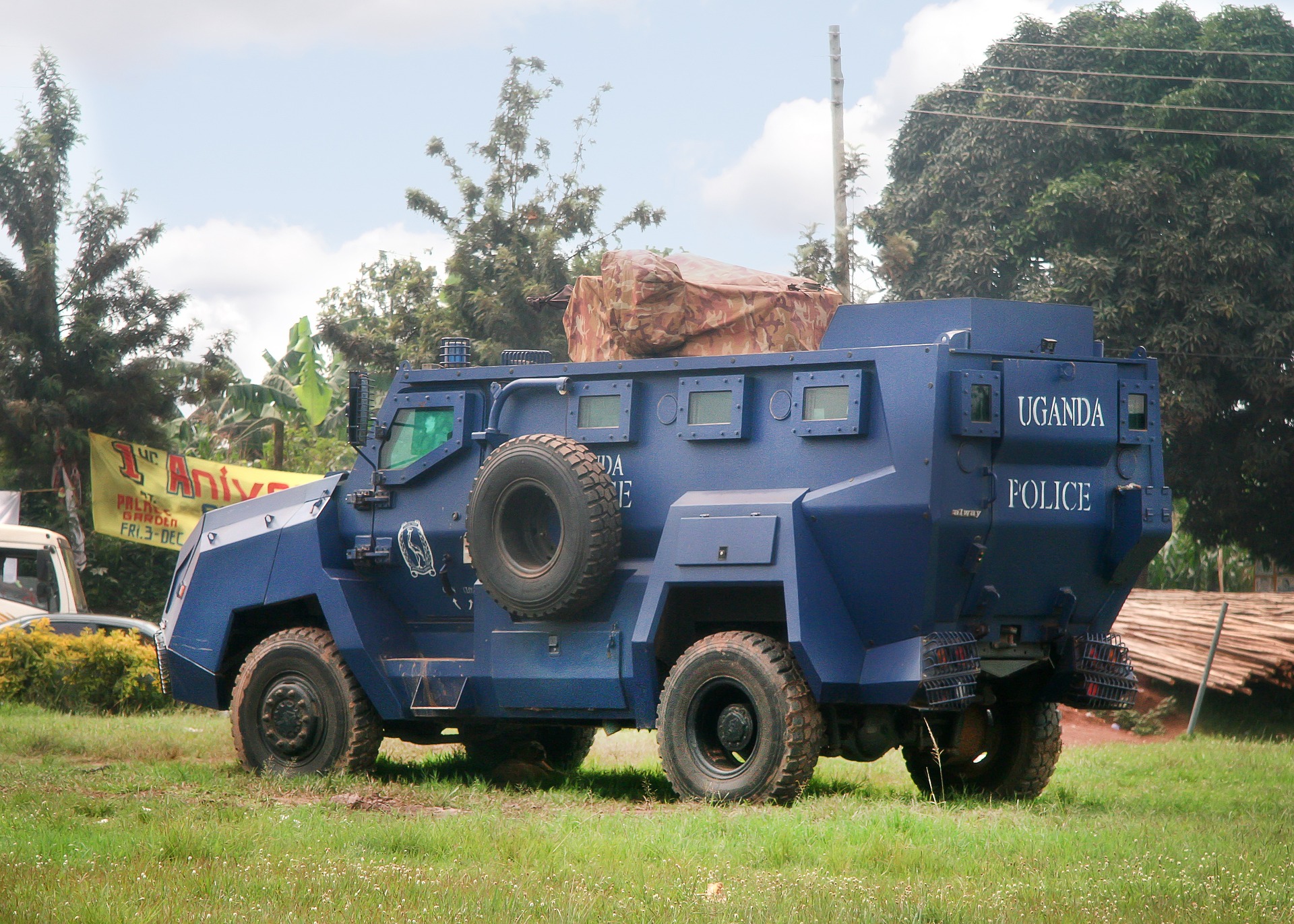
11 surrounding countries are at risk
Geneva/Kampala: As Uganda struggles to contain the Sudan Ebolavirus (SUDV) which spread to one more district (Jinja) after November 10, leading to a total of nine districts with confirmed cases, the country now also faces an ongoing outbreak of Crimean Congo Hemorrhagic Fever (CCHF).
Responding to the CCHF outbreak, the Ministry of Health and the World Health Organization are supporting clinical management and facilitating a referral pathway for the effective isolation and treatment of suspected and confirmed cases of CCHF and Sudan Ebolavirus disease.
Following a Global Outbreak Alert and Response Network (GOARN) Request for Assistance, as of November 22, there have been 52 offers of support received from 21 partner institutions. Six experts are currently deployed through GOARN in the functions of case management, partner coordination and infection prevention and control. Additional offers of support have been received for the functions of water, sanitation and hygiene (WaSH), epidemiology and surveillance, and laboratory capacities.
With regards to Sudan Ebolavirus, although WHO claimed the risk to be low at the global level, it revised the risk assessment from high to very high at the national level, and from low to high at the regional level.
WHO has revised the prioritization of the surrounding countries after conducting a risk assessment. In addition to the six surrounding countries that were assessed to be at risk, five additional countries are being included, namely the Central African Republic, Ethiopia, Somalia, Sudan and Djibouti. These countries have important population movements to and from Uganda. WHO has started to engage with these countries and will report their readiness activities in the next Disease Outbreak News (DON) report.
The Ministries of Health of the six neighbouring countries (Burundi, the Democratic Republic of the Congo, Kenya, Rwanda, South Sudan, and the United Republic of Tanzania), in-country and international partners, and WHO are supporting Sudan Ebolavirus readiness actions.
WHO stated that it did not receive the daily number of Ebola outbreak alerts regularly since November 7 from the Uganda government, but reported the number of alerts verified. Although there was a significant improvement in surveillance activities in most affected districts, contact tracing gaps were reported in newly affected districts, WHO stated adding that surveillance strengthening plans have been put in place in newly affected districts.
During the week commencing November 14, at least 953 alerts were verified (daily average 159), of which 335 (35%) met the definition of a suspected case.
Since the last Disease Outbreak News (DON) published by WHO on November 10, one newly affected district was reported (Jinja), leading to a total of nine districts that have reported confirmed SUDV cases. The most affected district remains Mubende with 64 (45%) confirmed cases and 29 (53%) confirmed deaths, followed by Kassanda with 48 (34%) confirmed cases and 20 (36%) confirmed deaths. Two districts, Bunyangabu and Kagadi, have not reported cases for more than 42 days.
Since the outbreak declaration on September 20, 2022, a total of 141 confirmed cases and 55 confirmed deaths (CFR 39%) from Ebola disease caused by the Sudan ebolavirus (SUDV) were reported by the Uganda Ministry of Health as of November 21. In addition, 22 probable cases (all are deaths) were reported since the beginning of the outbreak. Overall, 19 cases with seven deaths occurred among healthcare workers (HCWs). Since the beginning of the outbreak, 4652 contacts were registered, of which 3599 (78%) have completed the 21-day follow-up period.
As of November 21, a total of 700 contacts in five districts (Jinja, Kampala, Kassanda, Masaka, and Mubende) were under active surveillance. In the week commencing November 14, the average follow-up rate was 65%, representing a decrease of 26% in the follow-up rate as compared to 91% the previous week. Follow-up rates have been particularly low in Jinja and Masaka, at an average of 42% and 53%. The weekly number of confirmed cases reported decreased for the third consecutive week after the peak observed in the week of October 17-23. During the week commencing November 7, five confirmed and one probable case was reported, including one confirmed case and one probable death from a newly affected district (Jinja), in the Eastern Region of Uganda, which is 80 km distant from Kampala. The most recent confirmed case was reported by the Uganda MoH on November 14, from the Kampala district.
A higher proportion of cases are male (57.5%), and the most affected age group is represented by those aged 20-29 years, followed by those aged 30-39 years. Around 25% of cases are reported among children under 10 years old, indicating potential household transmission.
WHO said it held expert consultations to identify candidate therapeutics and vac
Preparedness and operational readiness in neighbouring countries
- Burundi is scaling up its operational readiness by coordinating with provinces and districts on upcoming activities such as the reinforcement of points of entry bordering Tanzania and Rwanda. In addition, training of community health workers and health care workers has been ongoing to enhance surveillance activities. As of November 21, all alerts had been investigated and resulted in a negative for SUDV.
- The Democratic Republic of the Congo has been focusing their readiness efforts on the training staff at points of entry. As of November 21, 98% of travellers at airports are being screened. In addition, the health zones have been strengthening their capacities in laboratory and case management. As of November 21, all alerts have been investigated and resulted in a negative for SUDV.
- Kenya is strengthening their capacities in case management through conducting trainer-of-trainers and holding a comprehensive simulation exercise with WHO’s support. Points of entry at high-risk counties have been conducting screenings as well. As of November 21, all alerts have been investigated and resulted in a negative for SUDV.
- Rwanda is updating its contingency plan to guide the efforts in scaling up its readiness capabilities. Specifically, there are advancements in the establishment of Ebola Treatment Units (ETUs). The Ministry of Health is also reinforcing its core capacities in infection prevention and control and case management. Specifically, WHO is developing and implementing a training package in case management. As of November 21, all alerts have been investigated and resulted in negative for SUDV.
- South Sudan has been enhancing its capacities in the areas of surveillance, case management and infection prevention and control. Healthcare workers at the subnational level have been undergoing training on SUDV management at health facilities. In addition, this past week, sensitization training for SUDV stakeholders have been completed. As of November 21, all alerts have been investigated and resulted in a negative for SUDV.
- Tanzania has conducted training in the areas of infection prevention and control (IPC) including safe and dignified burials. Health promoters have completed training in risk communication and community engagement and in mental health and psychosocial support. As of November 21, all alerts have been investigated and resulted in a negative for SUDV.
“The risk will be continuously assessed based on available and shared information,” WHO stated. It advised that successful SUDV disease outbreak control relies on applying a package of interventions, including case management, community engagement, surveillance and contact tracing, strengthening laboratory capacity, and safe and dignified burials.
It made the following suggestions:
- Healthcare workers should always take standard precautions when caring for patients, regardless of their presumed diagnosis. Implementation of IPC measures in health care (e.g., hand hygiene, training of health workers, adequate personal protective equipment (PPE) supplies, waste management, environmental cleaning, and disinfection etc.) with ongoing monitoring and supervision for implementation is required to reduce risks of health care facilities amplifying the outbreak.
- Ensuring the provision of safe and dignified burials, supporting IPC in community settings (including adequate WASH facilities, hand hygiene capacity and safe waste management) and community engagement and social mobilization are essential to prevent and mitigate ongoing transmission.
- Upon case identification, early initiation of supportive treatment has been shown to significantly improve survival.
- Establishing active surveillance at points of entry is an essential component of the outbreak response to mitigate the risk of international spread due to the high cross-border mobility between Uganda and neighbouring countries.
- There are no licensed vaccines for SUDV, but there are candidate vaccines which are due to be used in trials.
WHO meanwhile, also advised against any restrictions on travel and/or trade to Uganda based on available information for the current outbreak.
– global bihari bureau





